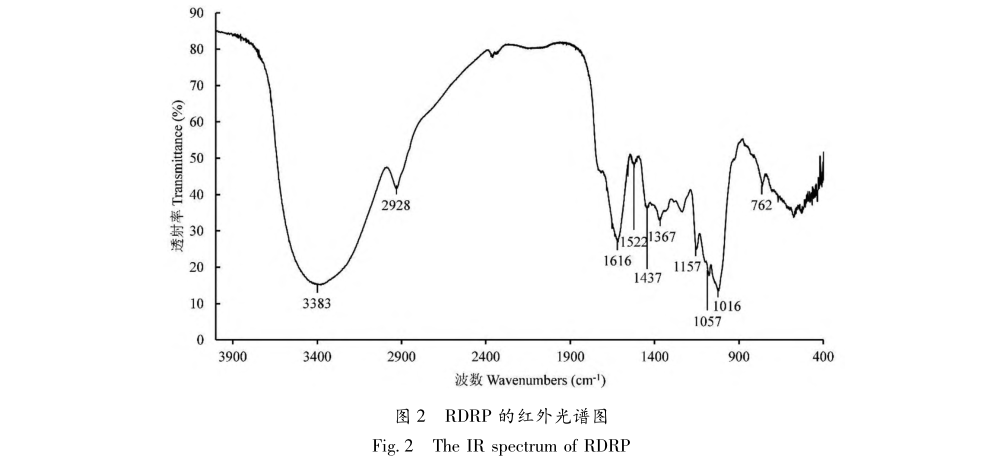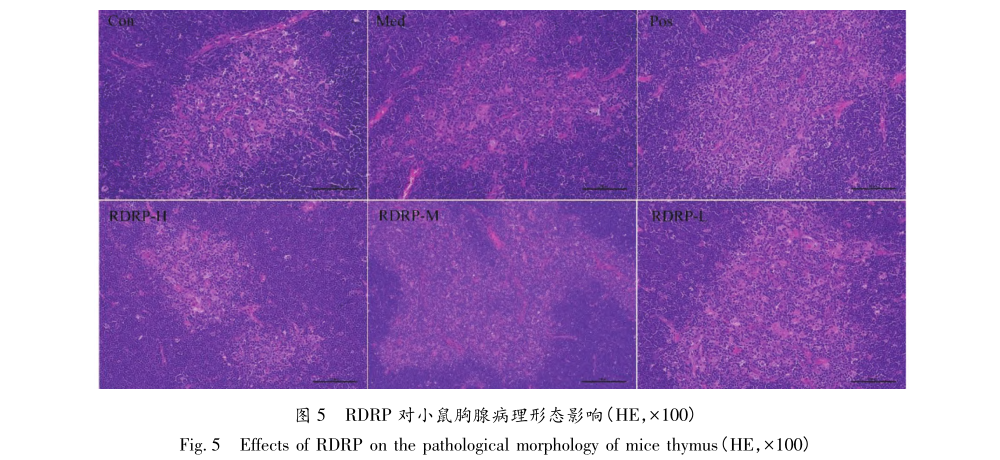The immunomodulatory effect of polysaccharides from Rosa davurica Pall. on cyclophosphamide induced immunosuppression in mice. Rosa davurica Pall. is the dried root of Rosa davurica Pall., also known as Rosa davurica root, wild rose root, and raspberry fruit root. Shan Ci Mei is widely grown in Northeast China, and its flowers, fruits, and roots are all used as medicine. The standard for the medicinal herb of Rosa rugosa is included in the drug standards of Jilin Province. It has a bitter and astringent taste, a mild nature, and has hemostatic and antibacterial effects. It is used to treat menstrual bleeding, functional uterine bleeding, chronic bronchitis, enteritis, bacterial dysentery, cystitis, and nephritis. In Mongolian medicine, the name of the Mongolian medicine for prickly pear root is “Zherelige · Zamuer Yin Wen Du Su”. Its efficacy is to dispel Xie Ri, control He Yi, and digest food. It is used for He Yi Xie Ri syndrome, Badagan Xie Ri syndrome, stomach Xie Ri syndrome, pulse disease, cough, and clearing liver toxicity. According to research reports, the root of Rosa rugosa contains lactones, tannins, polysaccharides, total glycosides, flavonoids, phenols, alkaloids, proteins, anthraquinones, and other components, which have pharmacological effects such as antioxidant, hypoglycemic, antibacterial, and vasodilatory. Han et al. reported that polysaccharides from Rosa rugosa root have an improving effect on the immune function of aging model mice, but there is little research on polysaccharides from Rosa rugosa root.
In recent years, polysaccharides have received increasing attention as a natural product with multiple biological activities. Numerous studies have shown that polysaccharides have various activities such as immune regulation, anti-tumor, antiviral, antioxidant, and blood glucose lowering. Chinese herbal polysaccharides, as natural immune modulators, have clear efficacy and few side effects, and have regulatory effects on immune cells, immune organs, and intestinal microbiota. The Northeast region of China has abundant wild mountain thorn resources, and its research and development in medicine and functional food will promote local economic development. Rose root is commonly used in medicine, but its application in related health products or food is relatively limited. This article extracts, purifies, and analyzes the structure of polysaccharides from Rosa rugosa roots. At the same time, it evaluates the regulatory effect of cyclophosphamide (CTX) on immune function in immunocompromised mice and explores its mechanism of action, providing experimental data for the development of Rosa rugosa roots polysaccharides in the future.










Plant polysaccharides have various biological activities and are increasingly attracting the attention of natural product researchers. Bioactive plant polysaccharides play an important role in fields such as pharmaceuticals, food, health products, and green products. With the continuous advancement of science and technology, the extraction, purification, and structural identification techniques of plant polysaccharides are gradually becoming more diversified, such as hot water extraction, alkaline extraction, ethanol fermentation precipitation, enzyme assisted extraction, microwave-assisted extraction, ultrasonic extraction, ultrasonic assisted enzyme extraction, subcritical water extraction, ultra-high pressure extraction, and vacuum extraction. These methods all have their advantages and disadvantages, among which the hot water extraction method, although the extraction rate is not very high, has the advantages of economy, non toxicity, safety, and no damage to cell walls, and is commonly used in polysaccharide extraction. In this study, the hot water extraction/ethanol precipitation method was used to extract polysaccharides from the roots of Rosa rugosa, and two methods were used for deproteinization. The results showed that the TCA method had a significant effect on deproteinization, but there was a greater loss of sugar. Therefore, the Sevage method is more suitable for deproteinization of polysaccharides from Rosa rugosa roots compared to the TCA method. After ethanol precipitation, a polysaccharide RDRP with relatively low polydispersity was obtained by 60% alcohol precipitation, with a sugar content of 94.1%. The structure of plant polysaccharides directly affects their biological activity, and the basic structure of polysaccharides can be identified by molecular weight distribution, infrared characteristic absorption peaks, monosaccharide composition, etc. In this study, the GPC method was used to determine the molecular weight of polysaccharides from Rosa rugosa roots, and it was found that RDRP was a mixture of polysaccharides with a weight average molecular weight of 13.1 kDa and low molecular weight (66.7 kDa). The infrared detection results indicate that the polysaccharide from Rosa rugosa root is a neutral pyran polysaccharide containing an alpha configuration. Analysis of monosaccharide composition shows that it is mainly composed of glucose, arabinose, galactose, mannose, and xylose. But its monosaccharide branched chain connection method needs further in-depth research.
The immune system includes immune organs, immune cells, and immune molecules, which work together to protect the body from pathogens. The thymus and spleen are the main immune organs that play an important role in generating and maintaining immune cells. As the center of humoral and cellular immunity, the spleen is the main site for T and B lymphocytes to settle, so the spleen index can reflect the level of the body’s immunity. Cyclophosphamide is a type of alkylating agent widely used in cancer treatment. But it not only has various toxicities to cancer cells, but also to rapidly dividing cells such as immune cells and epithelial cells, and is often used to establish immunosuppressive models. In this study, after intraperitoneal injection of cyclophosphamide into mice, their body mass, spleen index, thymus index, and immunoglobulin concentration levels were significantly lower than those of the blank control group (P<0.01), indicating the successful preparation of the immunosuppressive model mice. After continuous intervention with RDRP from Rosa rugosa root polysaccharides for 2 weeks, compared with the model control group, the peripheral blood leukocyte, lymphocyte, platelet count, spleen index, and thymus index of mice in the RDRP group were significantly increased (P<0.05 or P<0.01), indicating that it can promote the development of immune organs in immunocompromised mice. The pathological changes of thymus and spleen were observed under a biological optical microscope, and the results showed that the RDRP group of Rosa rugosa polysaccharides improved the pathological changes of spleen and thymus in mice, indicating that it can enhance the immune function of immune organs. ELISA detection found that the levels of immunoglobulin IgA, IgG, and IgM in the RDRP groups of Rosa rugosa root polysaccharides and the shiitake mushroom polysaccharides group significantly increased (P<0.01), indicating that Rosa rugosa root polysaccharides help enhance the body’s immune function. In addition, plant polysaccharides can activate T lymphocytes, B lymphocytes, macrophages, etc., promote related cytokines, and improve the body’s immune function. In this study, both the RDRP dosage groups of Rosa rugosa root polysaccharides and the shiitake mushroom polysaccharides group significantly upregulated the levels of IL-2, IFN – γ, TNF – α, and IL-6 in the serum of immunocompromised mice (P<0.01), indicating that Rosa rugosa root polysaccharides may regulate immune function and alleviate cyclophosphamide induced immunosuppression by upregulating the levels of cytokines in the serum of immunocompromised mice.
At present, the study of the immunomodulatory mechanism of polysaccharides has also received attention. Among them, the downstream pathway of TLR, NF – κ B, has been reported the most. In this study, Western blot was used to measure the expression levels of TLR4, MyD88, TRAF-6, and NF – κ B p65 proteins in each group. The results showed that compared with the model group, the TLR4, MyD88, and TRAF-6 proteins in the high-dose group of RDRP from Rosa rugosa root were significantly increased (P<0.01), and the NF – κ B p65 protein in each dose group of RDRP from Rosa rugosa root showed an upward trend. This result suggests that polysaccharides from Rosa rugosa root may activate TLR4 receptors, which in turn activate MyD88 (myeloid differentiation factor 88) to bind with IRAK (IL receptor associated kinase) to deactivate TRAF-6 (TNF receptor associated factor 6) and I κ B kinase complex, induce NF – κ B inhibition of protein kinase I κ B phosphorylation, increase the secretion of cytokines such as TNF – α and IL-6, and thus exert immunomodulatory effects.
In summary, the polysaccharides from Rosa rugosa, mainly composed of polysaccharides with a weight average molecular weight of 13.1 kDa, can increase the index of immune organs and the number of peripheral blood white blood cells, lymphocytes, and platelets, improve the pathological changes of immune organs, upregulate the expression levels of immune related proteins and cytokines, alleviate the immune deficiency caused by CTX, and demonstrate certain immune regulatory activity. Its mechanism of action is related to TLR/NF – κ B channels. The results of this study provide valuable experimental evidence for the development and application of polysaccharides from Rosa rugosa roots.
